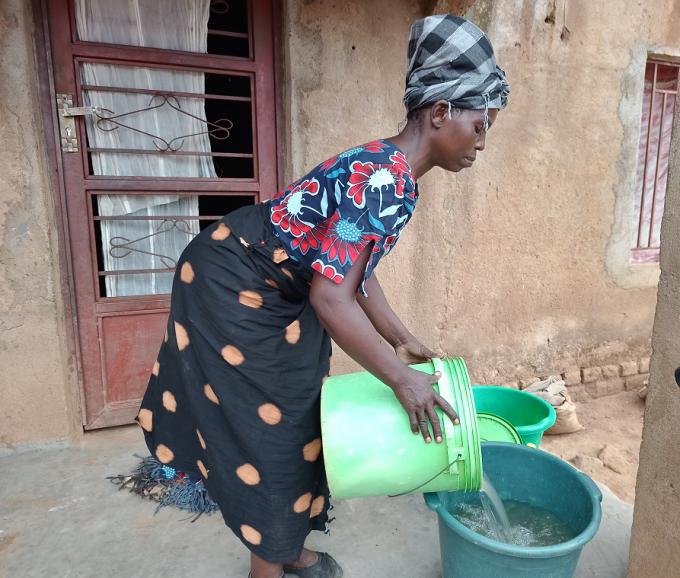With no safe water in sight, cholera destroys Mzimba community
 The raging Rukuru River, which borders the districts of Rumphi and Mzimba in northern Malawi, provides is a lifeblood to the communities that live close to this meandering watercourse.
The raging Rukuru River, which borders the districts of Rumphi and Mzimba in northern Malawi, provides is a lifeblood to the communities that live close to this meandering watercourse.
However, the fact that it is the main source of water for the thousands living on both sides poses the biggest risk to its beneficiaries.
At Mayuchi Village in Mzimba North, 42-year-old mother and grandmother Maggie Chawinga recently witnessed, first hand, the dangers of drinking unsafe water when two children in their household contracted cholera.
“It was tough,” she says. “As a I single parent, having to be in hospital to take care of the sick children meant that everything stopped. My other children could not go to school for two weeks.”
Chawinga explains that when her two-year-old grandson started vomiting and having serious diarrhoea, they had no idea of the severity of the problem until a government health surveillance assistant came through and urged them to rush the baby to the hospital. When her son also fell sick a few days later, they were quick to seek medical help.
The mother of four explains that because of the sicknesses, they discovered that the source of the disease was the river. Every morning, Chawinga and her children would go down to the river to fetch water from a swamp (their only source of water) for their daily needs.
“We need about 20 buckets of water a day, which means that we have to take up to 10 trips to have enough water for the day,” she says.
The closest borehole to Chawinga is five kilometres away; a whole day’s trip for the family to fetch water.
According to traditional leader, Mlumuzana Mayocha, water is a major problem for their community.
“Water is a really serious problem in this area. All my life, I have used water from South Rukuru. I think that is why our area was seriously hit by cholera. Even the first cholera case was someone who had been drinking water from the river,” he said.
Malawi 2020 Water and Sanitation Sector Performance report indicates that access to potable water in rural areas is at 86 percent. However, this is further compromised by the fact that 40 percent of water points do not function.
According to Mzimba North Director of Health and Social Services, Prince Chirwa, the district has so far registered 440 since the first case in August this year.
“This district has not registered any cholera cases in the past 10 years, so this came as a real shock to us.” he explains, adding that the source of the disease in the district was along the Rukuru River. Chirwa noted that when cholera stuck, the health office in the district was ill-prepared.
“Our preparedness plan had not been reviewed for years. We did not have resources; we did not have capacity to train healthcare workers; and no resources to carry out any community awareness activities.”
In response to the epidemic, the health office set up two cholera camps in Mzuzu and at Lumemo in Mzimba to manage cholera admissions. It was around this time that Save the Children stepped in to offer resources to fight outbreak.
As a result of the interventions, Chirwa says that the number of cases in the district have dropped dramatically.
“Over the past three weeks, the numbers have been going down. We have not registered any new cases compared to the time when we used to register 30 to 40 cases a day. We were scared that we would run out of resources,” he said.
Humanitarian manager Harrison Sikalamwa explains that save the Children has been working in Zomba, Mwanza, Nkhotakota and Mzimba North districts tirelessly to contain the cholera outbreak.
“These districts were chosen because we saw a sharp increase in the number of cholera cases being registered on daily basis including children. There were also a lot of gaps in services which needed extra support,” he said.
Save the Children is focusing on four main pillars: case management, wash coordination and monitoring, risk communication and community engagement. The organisation has also procured and distributed chlorine and hand-washing soap which has been distributed in schools around the four districts to ensure that children practice good hygiene.”
Back at Mayuchi Village in Mzimba North, Chawinga returns home from the river with a 20-litre pail of water on her head.
She carefully lays it on her veranda, enters her house and returns with a disused plastic bottle from which she pours a bottle top of chlorine liquid onto the pail of water.
“This (chlorine) has really saved our lives. Because with this chlorine, we are sure that we are now drinking safe water and no longer at risk of getting cholera. I hope that they get to distribute a lot more chlorine to everyone because I would not wish anyone to experience what I went through with my two children; it was a horrible experience,” she says.
 Malawi
Malawi